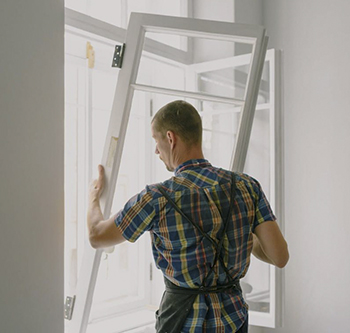Workplace design – flood protection
This article needs more work. To help develop this article click 'Edit this article' above.
The Herne Hill floods in August 2013 were a disaster for many homes and businesses.
As any residents and business owners who have been through it can testify, if you have ever received a phone call in the early hours telling you a burst water main has flooded your property, you will realise that is only the start of your problems. In a home your furniture etc. is ruined. In a business you can lose stock, books, materials – many of your assets – as well as power supplies and IT.
- Don’t think: it won’t happen to me: it could.
- Even if your premises are on top of a hill, a leak from a sprinkler system, a tank, pipe or a burst water main outside could still flood your basement/ground floor.
- Even if you are on an upper floor of a multi-storey building, the incoming power, phone lines, boards and IT may be located in the basement or on the ground floor and are quite likely to fail, affecting your business.
The loss adjusters and salvage teams will be quick enough to get your effects and equipment cleared out of the premises as it’s in their interests to minimise the consequential costs of claims. But the disruption caused to your business can be very serious financially.
Like fire, water main bursts and similar problems often seem to happen out of normal work hours. Visitors, trainees, other customers with appointments arriving the next day therefore may not be able to be contacted until they turn up and then have to be turned away. This is not good for customer relations.
So here is some advice based on experience:
- If your business premises include a basement or ground floor make sure that IT and power supplies are flood protected as much as possible.
- Do not locate IT equipment or any business-critical items in a basement if you can avoid it
- Install “bund wall” protection (at least 30cms high) around power or IT supplies that have to be positioned on the floor to reduce the risk of any flood water reaching them.
- Install step-over threshold barriers that will hold back water to doors to power supply rooms in basements.
- Install a plinth, ideally at least 30cms high in basement or ground floor areas wherever possible and place storage cabinets and other vulnerable items on top of the plinth.
- Keep high value or hard-to-replace items on shelving or in storage well above floor level or in the middle or higher drawers of cabinets, not in/on the bottom drawer/shelf;
- Have a disaster recovery / contingency plan in place to activate if a problem arises. Ensure it includes a plan for how to notify customers of any emergency. You may not be able to move to another site but you could back-up data to standalone memory / disks / servers or a data centre, have emergency supplies at off-site storage. Consider asking external trainees / customers to give you their mobile phone number “in case of emergency”;
- In the event of a flood, if at all possible, do not agree to close the file on damage claims with until at least 6 months have elapsed. Materials that have been in contact with water may deteriorate or rot well after the event.
It may never happen but, if it does, at least be prepared.
[edit] Related articles on Designing Buildings Wiki
- Flood.
- Flood and water management act.
- FloodSax.
- Flood resilient construction.
- Planning for floods.
- BRE flood resilient repair project.
- BREEAM Flood risk management.
- Building flood resilience.
- Changing attitudes to property flood resilience in the UK.
- Fighting flooding in the 21st century.
- Flood defences.
- Flood resilient house.
- Pitt Review Lessons learned from the 2007 floods.
- Planning for floods.
- Property flood resilience.
- Pumps and dewatering equipment.
- Temporary flood defences.
- Ten years on - Lessons from the Flood on building resilience.
- Thames barrier.
- Workplace design – flood protection.
Featured articles and news
Licensing construction in the UK
As the latest report and proposal to licence builders reaches Parliament.
Building Safety Alliance golden thread guidance
Extensive excel checklist of information with guidance document freely accessible.
Fair Payment Code and other payment initiatives
For fair and late payments, need to work together to add value.
Pre-planning delivery programmes and delay penalties
Proposed for housebuilders in government reform: Speeding Up Build Out.
High street health: converting a building for healthcare uses
The benefits of health centres acting as new anchor sites in the high street.
The Remarkable Pinwill Sisters: from ‘lady woodcarvers’ to professionals. Book review.
Skills gap and investment returns on apprenticeships
ECA welcomes new reports from JTL Training and The Electrotechnical Skills Partnership.
Committee report criticises UK retrofit schemes
CIOB responds to UK’s Energy Security and Net Zero Committee report.
Design and construction industry podcasts
Professional development, practice, the pandemic, platforms and podcasts. Have we missed anything?
C20 Society; Buildings at Risk List 2025
10 more buildings published with updates on the past decade of buildings featured.
Boiler Upgrade Scheme and certifications consultation
Summary of government consultation, closing 11 June 2025.
Deputy editor of AT, Tim Fraser, discusses the newly formed society with its current chair, Chris Halligan MCIAT.
Barratt Lo-E passivhaus standard homes planned enmasse
With an initial 728 Lo-E homes across two sites and many more planned for the future.
Government urged to uphold Warm Homes commitment
ECA and industry bodies write to Government concerning its 13.2 billion Warm Homes manifesto commitment.
From project managers to rising stars, sustainability pioneers and more.
Places of Worship in Britain and Ireland, 1929-1990. Book review.
The emancipation of women in art.























